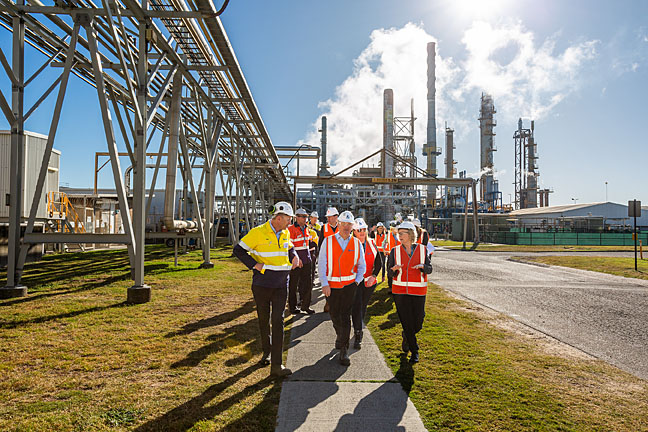Home Case Studies Implementing Industrial Scale Decarbonisation with Orica
Implementing Industrial Scale Decarbonisation with Orica
Our work supported Orica to successfully register one of the largest projects in the ERF’s history.
Home Case Studies Implementing Industrial Scale Decarbonisation with Orica
Our work supported Orica to successfully register one of the largest projects in the ERF’s history.
Orica is the world’s largest provider of commercial explosives and innovative blasting systems to the mining, quarrying, oil and gas and construction markets, a leading supplier of sodium cyanide for gold extraction, and a specialist provider of ground support services in mining and tunnelling.
To meet its target to reduce emissions by 40% by 2030, Orica undertook a large Emissions Reduction Fund (ERF) (now the Australian Carbon Credit Unit scheme) project at its Kooragang Island Facility. Located in the Hunter Valley and an integral part of the company’s global operations.
In early 2020, Orica engaged Anthesis (formerly Ndevr Environmental) to complete a detailed due diligence on the project. We developed comprehensive Forward Abatement (FAE) estimates in accordance with the Facilities Method and following due diligence, also supported Orica with Project registration and auction support.
Key to the project’s success was the systematic, evidence-based approach. Our analysis was based on a deep understanding of the National Greenhouse Energy Reporting (NGER) scheme and ERF/Safeguard Mechanism framework. We applied that understanding to the available information on the abatement technology and a range of considerations around risk and consideration.
This work led to Orica’s announcement in 2021 of plans to install an Australian industry-first tertiary catalyst abatement technology, EnviNOx® at its Kooragang Island manufacturing plant. The technology is designed to deliver up to 95 percent abatement efficiency, reducing the site’s total greenhouse gas emissions by almost 50 per cent in partnership with the NSW Department of Planning, Industry and Environment and the Clean Energy Finance Corporation.
Our work supported Orica to successfully register the project with the ERF – one of the largest projects in the ERF’s history. It is forecast to deliver industrial emissions reductions at scale in the nature of 500K+ tCO2e per year and deliver a cumulative emissions reduction of at least 4.7 MtCO2e by 2030 based on forecast production.
With this successful foundation, Orica will be able to significantly reduce its emissions profile, and in a traditionally hard-to-abate sector it’s great to see collaboration accelerate the pathway towards industrial decarbonisation and significant emissions reductions.


Discover how Anthesis can support your sustainability ambitions.
We’d love to hear from you
We are the world’s leading purpose driven, digitally enabled, science-based activator. And always welcome inquiries and partnerships to drive positive change together.